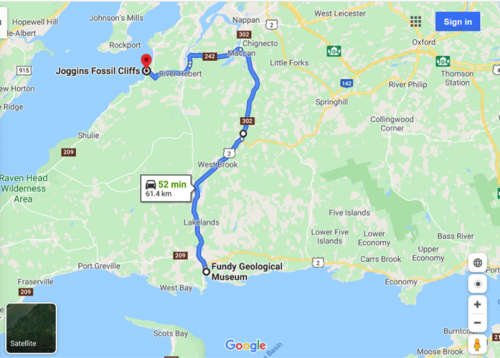Fundy Field Notes - Q & A with Curator/Directors
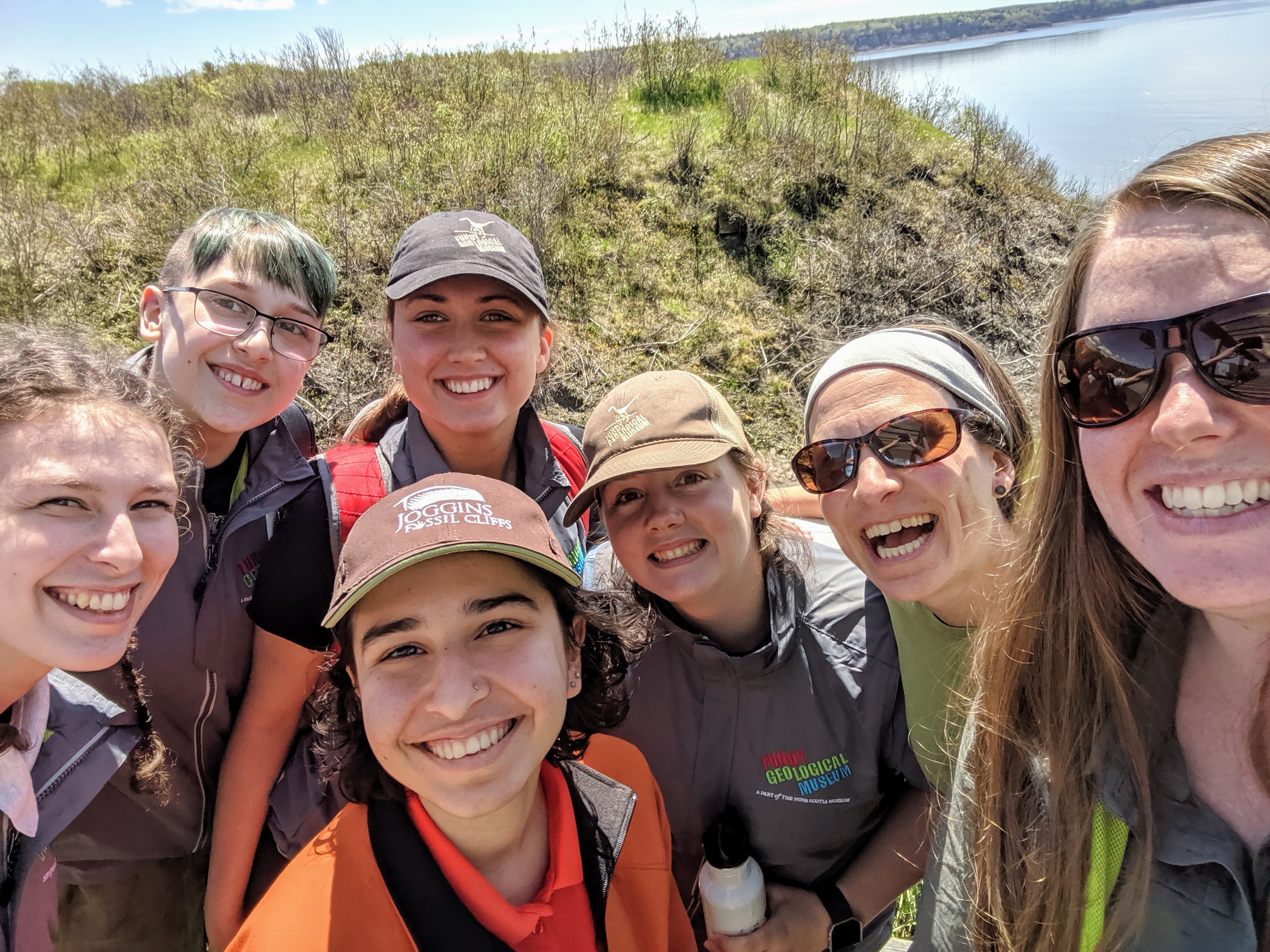
Nov. 20, 2020
We asked the Curator of Palaeontology at the Joggins Fossil Institute, Melissa Grey, Ph.D., and the Director/Curator of the Fundy Geological Museum, Danielle Serratos, M.S. to answer a few questions about the museums they work in and why those institutions are so important to Nova Scotia and the world.
-
What is your institution’s primary focus?
Grey- The Joggins Fossil Cliffs UNESCO World Heritage Site is the best place in the world to view what the world was like during the Carboniferous Period over 300 million years ago (about 100 million years BEFORE dinosaurs existed!). The Joggins Fossil Institute (JFI) has a museum and offers guided tours of the beach where visitors can explore for fossils. The Institute’s mission is to protect, conserve, and present the outstanding value of the Joggins Fossil Cliffs through research, education, and tourism.
Serratos- The Fundy Geo Museum is a part of the Nova Scotia Museum family which means we’re responsible for communicating geology and earth science to the people of Nova Scotia as well as to the guests that visit our beautiful shores. Our Museum focuses on some of the most significant moments captured in the fossil record such as evidence of earliest life, Canada’s earliest dinosaurs, and some of the world’s smallest dinosaur footprints! We actively work to preserve these important pieces of Earth’s past, research and share those stories with the public, and help to protect our landscape for future generations.
-
Do you take the public to any active research site(s)?
Serratos- We sure do, the Fundy Geo Museum currently studies and excavates Canada’s oldest dinosaurs from Wasson Bluff, a few kilometers down the road from the Museum. We offer many experiences like the Tidal Reveal program and the Fossils on Horseback experience with the Spirit Reins Ranch there. We are also currently creating a virtual guided tour of the local fossil cliffs for our online visitors. Additionally, we offer tours and experiences at other significant sites in the Parrsboro Shore area which explore rocks, minerals, the phenomenon of the world’s highest tides, and the local influences of the Mi’kmaq and early settlers on Nova Scotia’s landscape.

Grey- Yes! Much of the historical and current research at the Joggins Site takes place where visitors go on tours. The Institute conducts in-house research as well as hosts researchers from around the world.
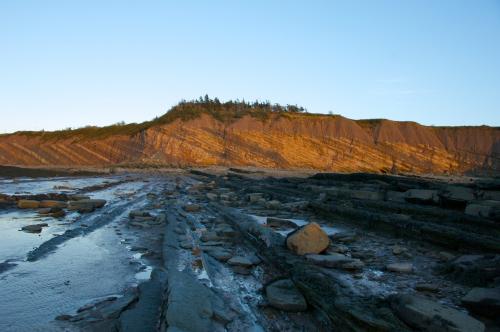
-
Why are there so many geology museums in Nova Scotia?
Grey- Nova Scotia has such a varied geological background, spanning many, many millions of years! There are lots of stories to tell!
Serratos- I agree with Dr. Grey, I think Nova Scotia has an unusual amount of significant geology that tells the history of life on Earth and we all recognize that these are stories that must be shared.
-
What is the difference between a UNESCO World Heritage site and a Nova Scotia Special Place?
Grey- A UNESCO World Heritage Site is a globally significant natural and/or cultural place – this means these sites are significant to humanity everywhere and forever. The Joggins Fossil Cliffs Site is both a UNESCO World Heritage Site and a Nova Scotia Special Place!
Serratos- The Fundy Geo Museum was instrumental in getting the Cliffs of Fundy UNESCO Geopark designation along the Parrsboro Shore and surrounding coastline of the Minas Basin (Bay of Fundy). Many of our field localities such as Wasson Bluff are protected Nova Scotia Special Places and we take pride in our responsibility to educate and protect these areas. It is important to remember that all fossils within Nova Scotia are the property of everyone and are held in trust of the public by repositories such as Fundy Geo and the Joggins Fossil Institute. This enables everyone to have research access to scientifically important specimens and guarantees future generations will be able to see and learn about Earth’s past at our museums.
-
What does a typical visit to your institution look like?
Serratos- Guests are encouraged to pre-book their museum admission and any tours and/or experiences prior to arriving on-site. The pandemic has shifted how we operate in many ways and timed entry tickets with limited capacity within our museum gallery are two ways we try to maximise the safety of all who enter our doors (staff included). Once here, we offer masks and hand sanitizer for everyone as they enter after which they check in with our front line staff and are directed to either the gallery, gathering spots for tours, or our multipurpose room for community events. Our gallery usually takes about an hour to walk through while walking tours range from 1.5-2.5 hours (depending on location), and experiences like Tidal Reveal and Fossils on Horseback take a sizable chunk of guest’s day.
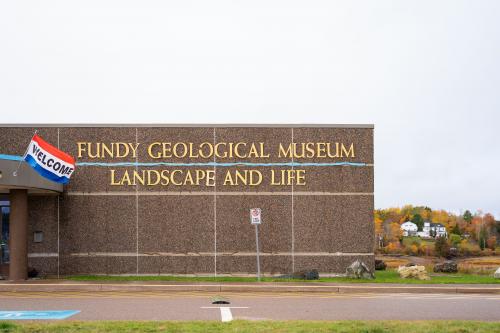
[Fundy Geo Exterior photo “Image courtesy of Nova Social Media”]
Grey- At Joggins, admission to the Centre includes a half hour beach tour (tours are offered at various times throughout the day but this may be subject to change because of physical distancing required during the COVID-19 pandemic). Many visitors will explore the museum before or after their time on the beach. A typical visit will last about 1.5-2 hours. We also offer 2 hour and 4 hour tours of the site for those that are really keen on exploring more! In 2019 we offered the Joggins Hidden Cliffs Experience, a four-hour kayaking adventure that gave participants a chance to explore sections of the Cliffs that are completely inaccessible by foot. We hope to offer this opportunity again once the pandemic allows for close-contact experiences.
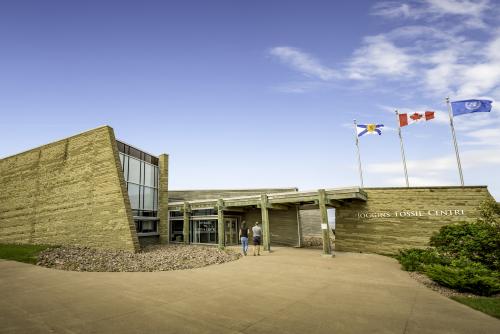
Visiting
Hours at both our sites are different depending on the time of year so we encourage guests to check out our websites and social media channels for up-to-date info.
Facebook: /FundyGeologicalMuseum & /Joggins.Fossil.Cliffs
Twitter: @FundyGeo & @JogginsFossils
Instagram: @FundyGeoMuseum & @JogginsFossilCliffs
Websites: fundygeological.novascotia.ca & jogginsfossilcliffs.net
Map
